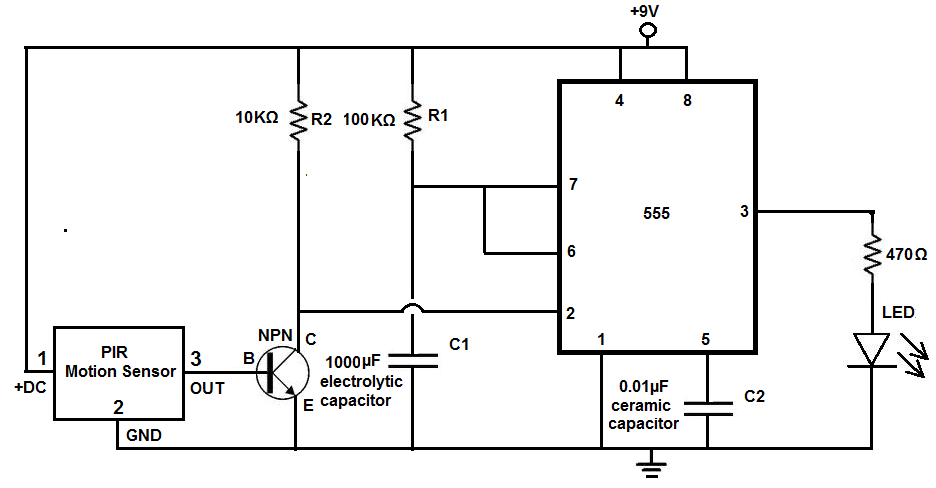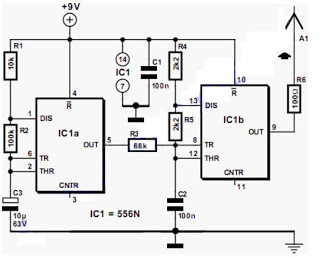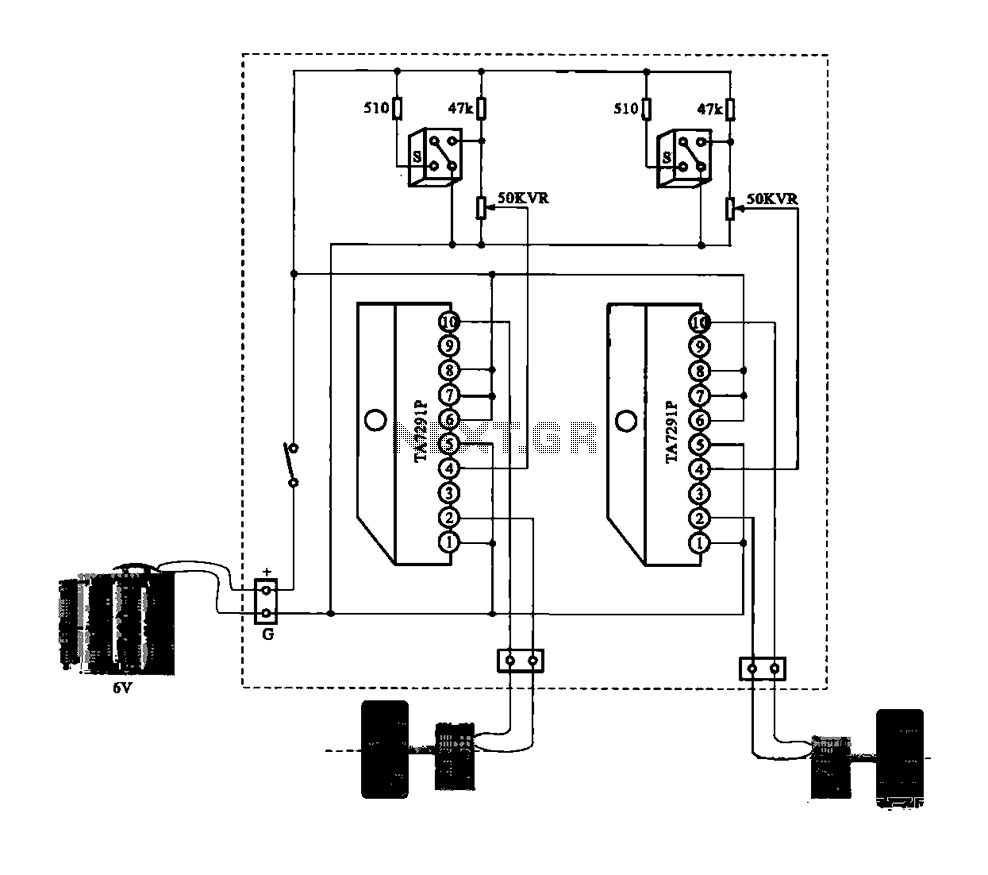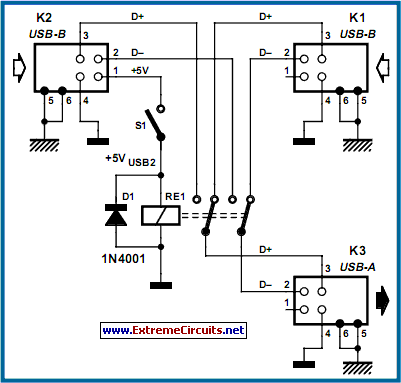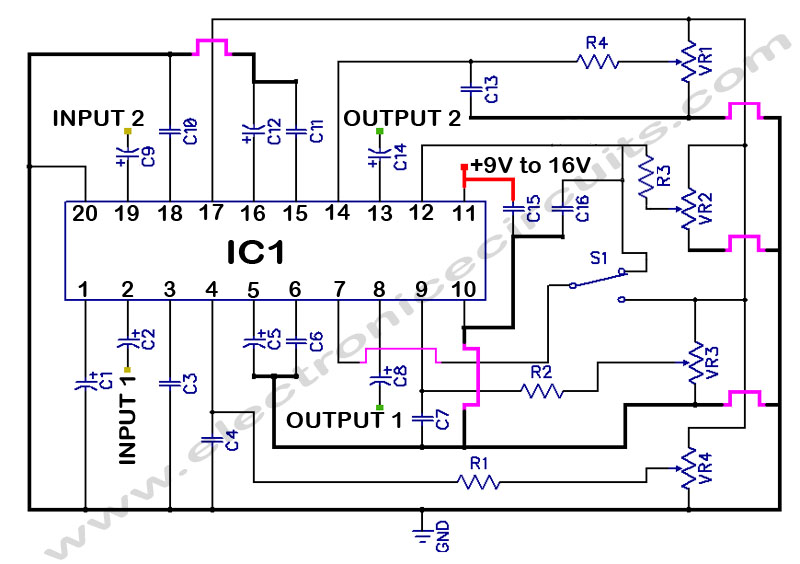
Circuit explanation of DC/AC inverter
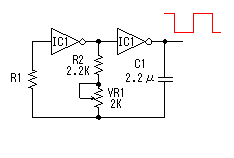
This circuit is a square wave oscillator that utilizes CMOS-type logic inverters. The term "logic inverter" is used to prevent confusion with a DC/AC inverter. The oscillator's output is connected to a drive circuit via the logic inverters. The antiphase signal of the alternating current is also generated using these logic inverters. It is important to connect the output of the logic inverters without grounding to avoid negative influences. The resistor and capacitor values chosen for the oscillator allow for frequency settings of either 50 Hz or 60 Hz using a variable resistor. This is a reference value due to potential component tolerances in the actual circuit. The oscillator output is TTL, ranging from 0V to 5V, which is then converted to an amplitude of 0V to 12V to drive a field-effect transistor (FET) within this circuit. This circuit serves as the switching mechanism, which is the primary component of the DC/AC inverter. A power MOSFET configuration is employed, utilizing two sets of CMOS FET circuits controlled by antiphase signals. When the inputs of transistors TR3 and TR4 are at a low level, and the inputs of TR5 and TR6 are at a high level, TR3 and TR6 are turned on while TR4 and TR5 are turned off. Consequently, the electric current flows from point A to point B through the secondary coil (12V side) of the transformer. When the input levels are reversed, TR3 and TR6 turn off, and TR4 and TR5 turn on, causing the current flow through the transformer to reverse. This alternating condition continues as long as the oscillator is operational, resulting in significant current flow on the transformer's secondary side. A fuse is included in the design for protection.
The square wave oscillator circuit is designed to generate a stable square wave output using CMOS logic inverters. The frequency of the oscillator can be adjusted by varying the resistance through a variable resistor in conjunction with a capacitor, allowing for operation at either 50 Hz or 60 Hz. The selection of these values is critical, as they determine the oscillation frequency, which is essential for the proper functioning of the DC/AC inverter.
The output from the oscillator is a TTL signal, which is typically between 0V and 5V. This signal is insufficient to drive the power MOSFETs directly; therefore, a level shifting mechanism is implemented to convert this signal into a higher amplitude of 0V to 12V. This conversion is necessary to ensure that the MOSFETs can be switched adequately to handle the power levels required for the inverter operation.
The inverter circuit employs a push-pull configuration using complementary MOSFET pairs (TR3, TR4 and TR5, TR6). This arrangement allows for efficient switching and control of the current flowing through the transformer. The antiphase control strategy ensures that when one pair of transistors is conducting, the other pair is turned off, preventing short circuits and allowing for the alternating current to be generated in the transformer secondary.
In practical applications, attention must be given to the choice of components, particularly the MOSFETs, which must be rated for the expected current and voltage levels. The inclusion of a fuse is a critical safety feature, providing protection against overcurrent conditions that could potentially damage the circuit components or lead to hazardous situations.
Overall, this square wave oscillator and inverter circuit represents a fundamental design approach for converting DC to AC power, suitable for various electronic applications requiring an inverter solution.This is the square wave oscillator which used a CMOS-type logic inverters. I use the word "logic inverter" to avoid confusion with the DC/AC inverter. The output of the oscillator is connected with the drive circuit through the logic inverters. The antiphase signal of the alternating current is created using the logic inverter, too. Connect the in put of the logic inverters not to be using with the grounding to avoid bad influence. I chose resistance and capacitor for the oscillator in the following value. I calculated that it was possible to set to 50 Hz or 60 Hz with the variable resistor. Because there is an error of the part in the actual circuit, it is a reference value. Because the output of the oscillator is the TTL of 0V to 5V, it is converted into the amplitude of vibration of 0V to 12V to drive an FET with this circuit. It is not a special circuit. This is the switching circuit which is the main circuit of the DC/AC inverter this time. I used C-MOS FET circuit by power MOS FET. Two sets of C-MOS FET circuits are used and are controlled by the antiphase. In case of the input of TR3 and TR4 are L level and the input of TR5 and TR6 are H level, TR3 and TR6 become ON condition and TR4 and TR5 become OFF condition.
Therefore, the electric current flows through the direction of A to B to the secondary coil(12V side) of the transformer. When the input level is opposite, TR3 and TR6 become OFF condition and TR4 and TR5 become ON condition.
Therefore, the electric current which flows through the transformer becomes contrary to the case of the above. Either above-mentioned condition is continued when the oscillator stops. Therefore, the big electric current flows on the secondary side of the transformer. The fuse must be put to protect. 🔗 External reference
The square wave oscillator circuit is designed to generate a stable square wave output using CMOS logic inverters. The frequency of the oscillator can be adjusted by varying the resistance through a variable resistor in conjunction with a capacitor, allowing for operation at either 50 Hz or 60 Hz. The selection of these values is critical, as they determine the oscillation frequency, which is essential for the proper functioning of the DC/AC inverter.
The output from the oscillator is a TTL signal, which is typically between 0V and 5V. This signal is insufficient to drive the power MOSFETs directly; therefore, a level shifting mechanism is implemented to convert this signal into a higher amplitude of 0V to 12V. This conversion is necessary to ensure that the MOSFETs can be switched adequately to handle the power levels required for the inverter operation.
The inverter circuit employs a push-pull configuration using complementary MOSFET pairs (TR3, TR4 and TR5, TR6). This arrangement allows for efficient switching and control of the current flowing through the transformer. The antiphase control strategy ensures that when one pair of transistors is conducting, the other pair is turned off, preventing short circuits and allowing for the alternating current to be generated in the transformer secondary.
In practical applications, attention must be given to the choice of components, particularly the MOSFETs, which must be rated for the expected current and voltage levels. The inclusion of a fuse is a critical safety feature, providing protection against overcurrent conditions that could potentially damage the circuit components or lead to hazardous situations.
Overall, this square wave oscillator and inverter circuit represents a fundamental design approach for converting DC to AC power, suitable for various electronic applications requiring an inverter solution.This is the square wave oscillator which used a CMOS-type logic inverters. I use the word "logic inverter" to avoid confusion with the DC/AC inverter. The output of the oscillator is connected with the drive circuit through the logic inverters. The antiphase signal of the alternating current is created using the logic inverter, too. Connect the in put of the logic inverters not to be using with the grounding to avoid bad influence. I chose resistance and capacitor for the oscillator in the following value. I calculated that it was possible to set to 50 Hz or 60 Hz with the variable resistor. Because there is an error of the part in the actual circuit, it is a reference value. Because the output of the oscillator is the TTL of 0V to 5V, it is converted into the amplitude of vibration of 0V to 12V to drive an FET with this circuit. It is not a special circuit. This is the switching circuit which is the main circuit of the DC/AC inverter this time. I used C-MOS FET circuit by power MOS FET. Two sets of C-MOS FET circuits are used and are controlled by the antiphase. In case of the input of TR3 and TR4 are L level and the input of TR5 and TR6 are H level, TR3 and TR6 become ON condition and TR4 and TR5 become OFF condition.
Therefore, the electric current flows through the direction of A to B to the secondary coil(12V side) of the transformer. When the input level is opposite, TR3 and TR6 become OFF condition and TR4 and TR5 become ON condition.
Therefore, the electric current which flows through the transformer becomes contrary to the case of the above. Either above-mentioned condition is continued when the oscillator stops. Therefore, the big electric current flows on the secondary side of the transformer. The fuse must be put to protect. 🔗 External reference
